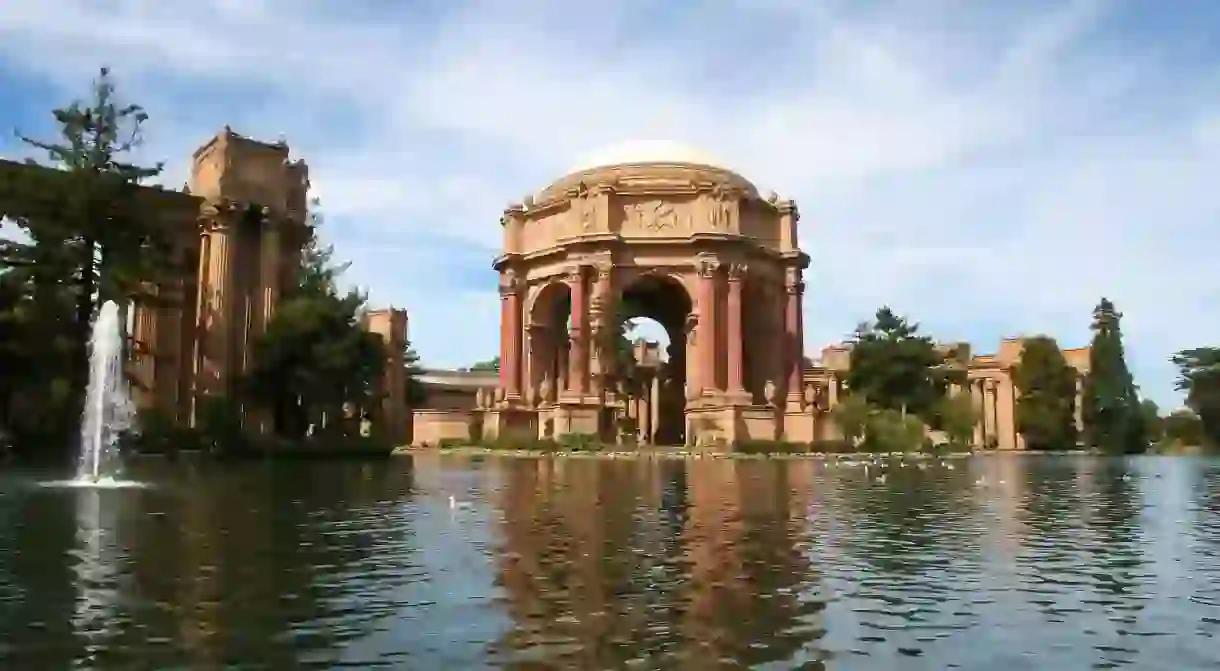The Turbulent History Of The Palace Of Fine Arts, California

On February 20, 1915 the city of San Francisco buzzed with excitement as crowds from all around the world poured it into the Panama-Pacific International Exposition. The Exposition followed in the tradition of extravagant world’s fairs. A temporary yet sumptuous mini-city celebrating the completion of the Panama Canal and the splendor of San Francisco was built on the outskirts of the city, in what is now the city’s Marina District. Rising majestically at the westernmost edge of the Fair was the Palace of Fine Arts.
As was the case for all of the fair’s buildings, the Palace of Fine Arts was designed to last only through the duration of the fair. Yet there was something magical about this structure that captured the hearts of San Franciscans and the world. Today, the Palace is the last remaining building from this grand exhibition.
The Palace of Fine Arts was designed by Bernard Maybeck, a well-known California architect. Inspired by a Piranesi engraving, Maybeck designed the Palace to resemble a Roman ruin. Maybeck wished the Palace to show ‘the mortality of grandeur and the vanity of human wishes.’ The result was a fanciful building which mixed Greek and Roman elements. The focal point of the Palace was its central rotunda, modeled after a Roman temple. Inside this rotunda, sculptures and decorative motifs celebrated the history of art. On the underside of the central dome was a mural by Robert Reed, which showed the conception and birth of art. From this central rotunda, two columned walkways extended out forming a frame around the central pond. Behind this decorative structure stood the vast exhibition hall which housed an art exhibit during the fair. The entire structure of Palace blended art, architecture, and the natural world, thus creating a magical experience for visitors.
In 1916, as the Panama-Pacific Exhibition drew to a close and the rest of the temporary structures were destroyed, the Palace remained standing due to popular demand. Philanthropist Phoebe Apperson Hearst funded the Palace Conservation League in order to conserve the Palace. The Palace’s exhibit hall continued to function as an art exhibit hall for several years. From 1934 to 1940, the hall housed 18 indoor tennis courts. During the Great Depression, WPA artists were commissioned to replace Robert Reed’s murals on the underside of the dome. From 1947 to 1958, the Palace’s exhibit hall was used as the San Francisco Fire Department’s headquarters, a warehouse, and even a phone distribution center.

However, the building was not meant to last more than a couple of months. Thus by the 1950s, the Palace began to crumble and became overgrown by its once manicured gardens. Maybeck’s vision of a Roman ruin had come to fruition. In 1958, the renovation of the Palace was approved by the California State legislature, and in 1965 the old structure was demolished and the Palace rebuilt. The building that we see today is this second structure. In 1969, the Exploratorium moved into the Palace where it remained until 2013, when the museum moved to its new location at Pier 15 in the Embarcadero. Today, the Palace of Fine Arts remains a bucolic oasis amidst the busy city where visitors can enjoy the beauty of nature and San Francisco’s history.













